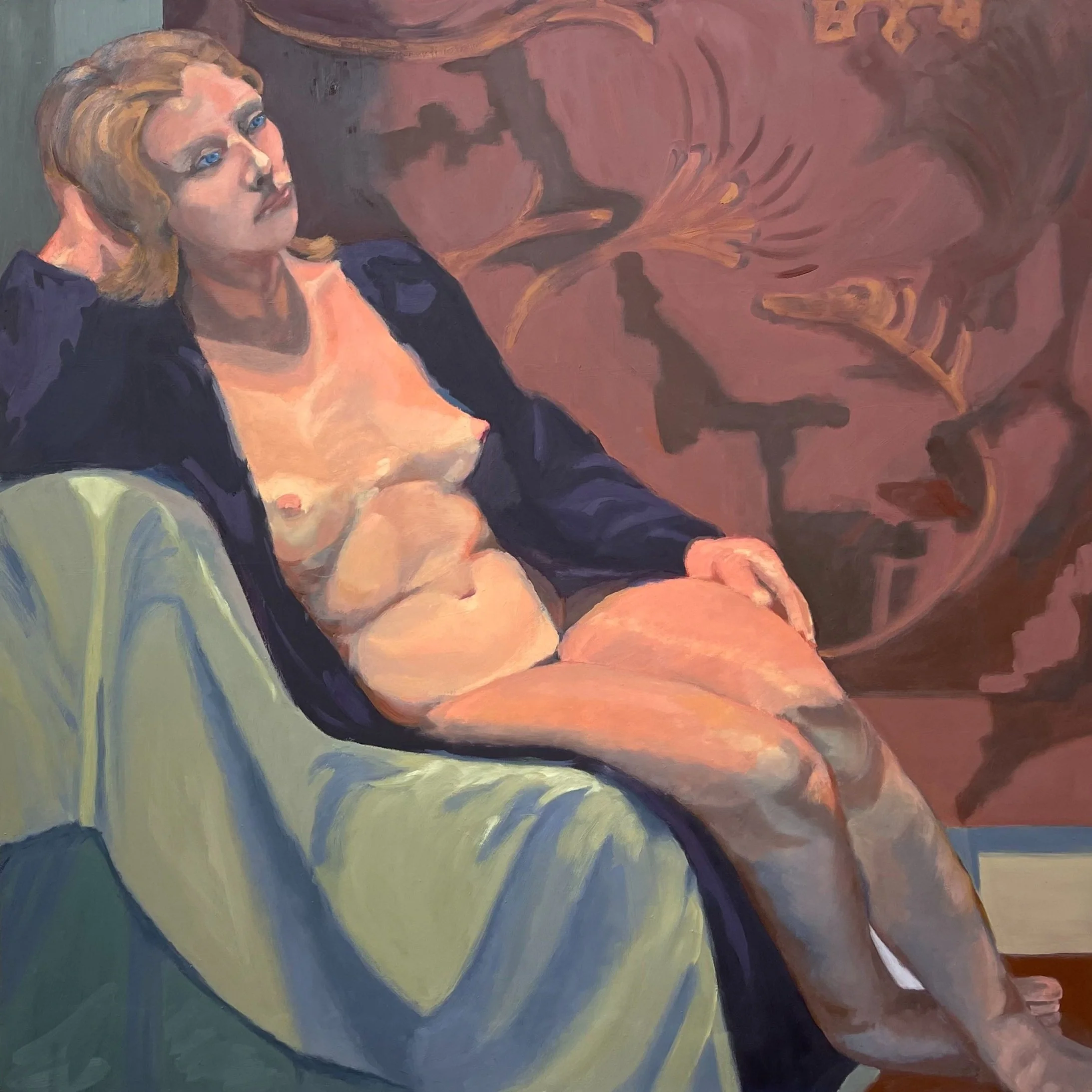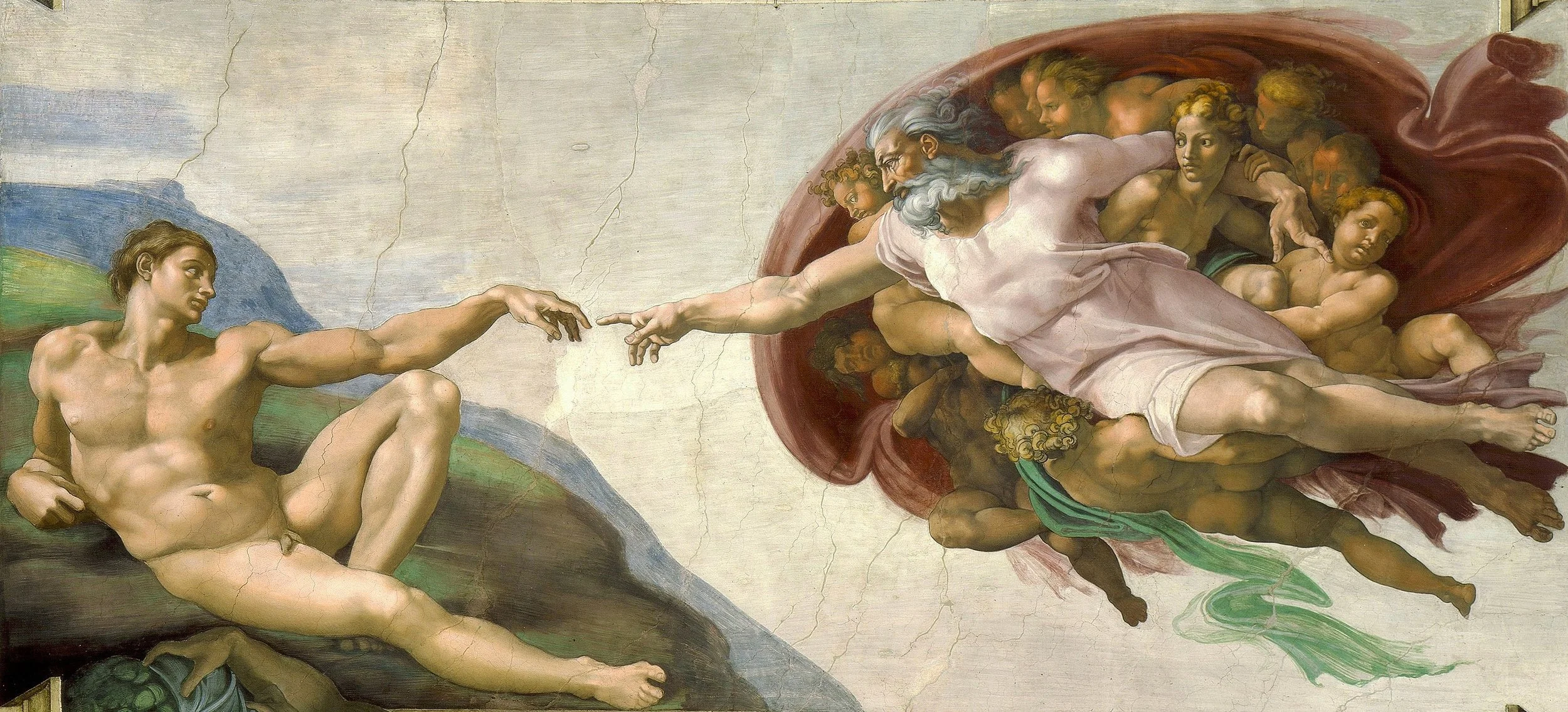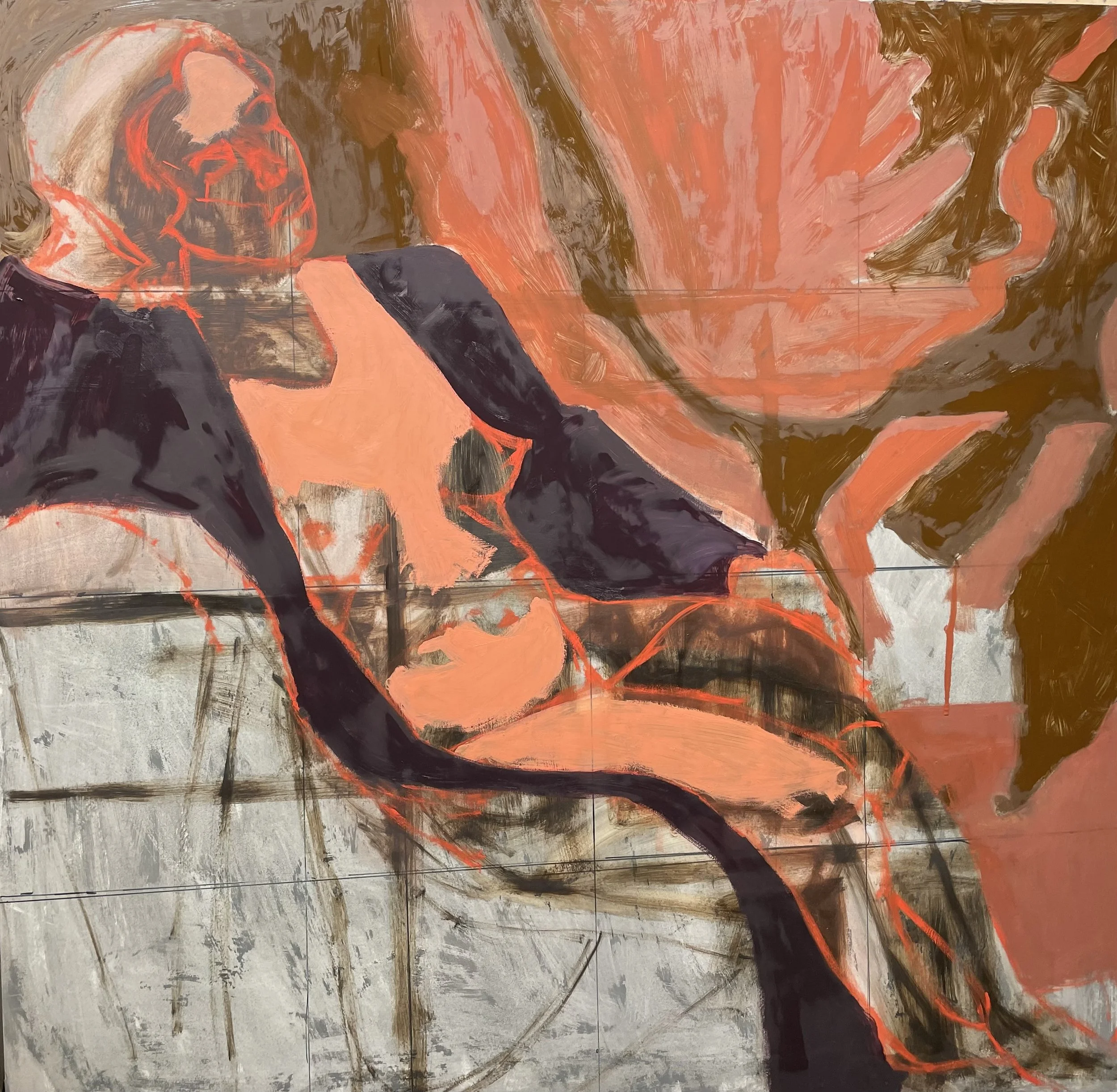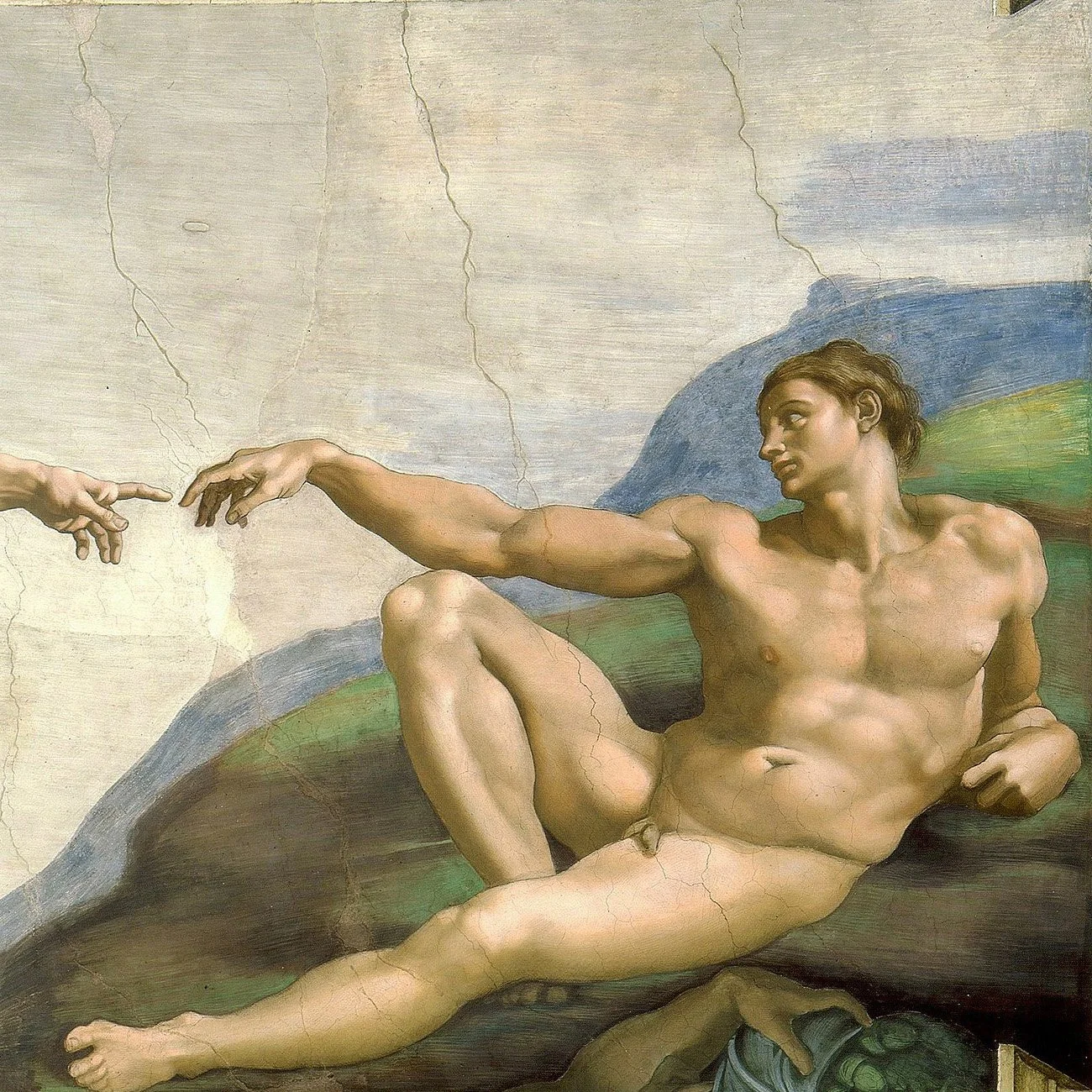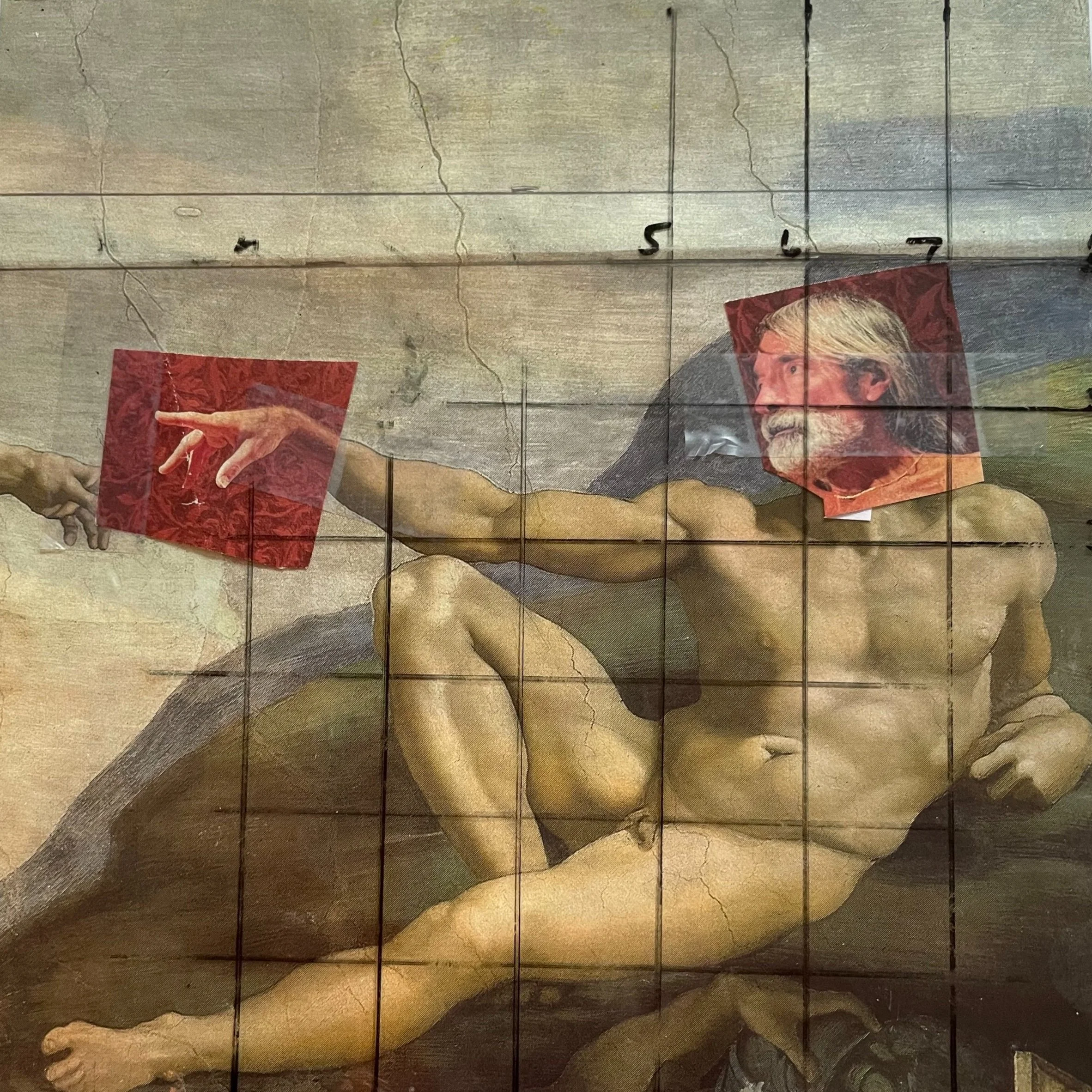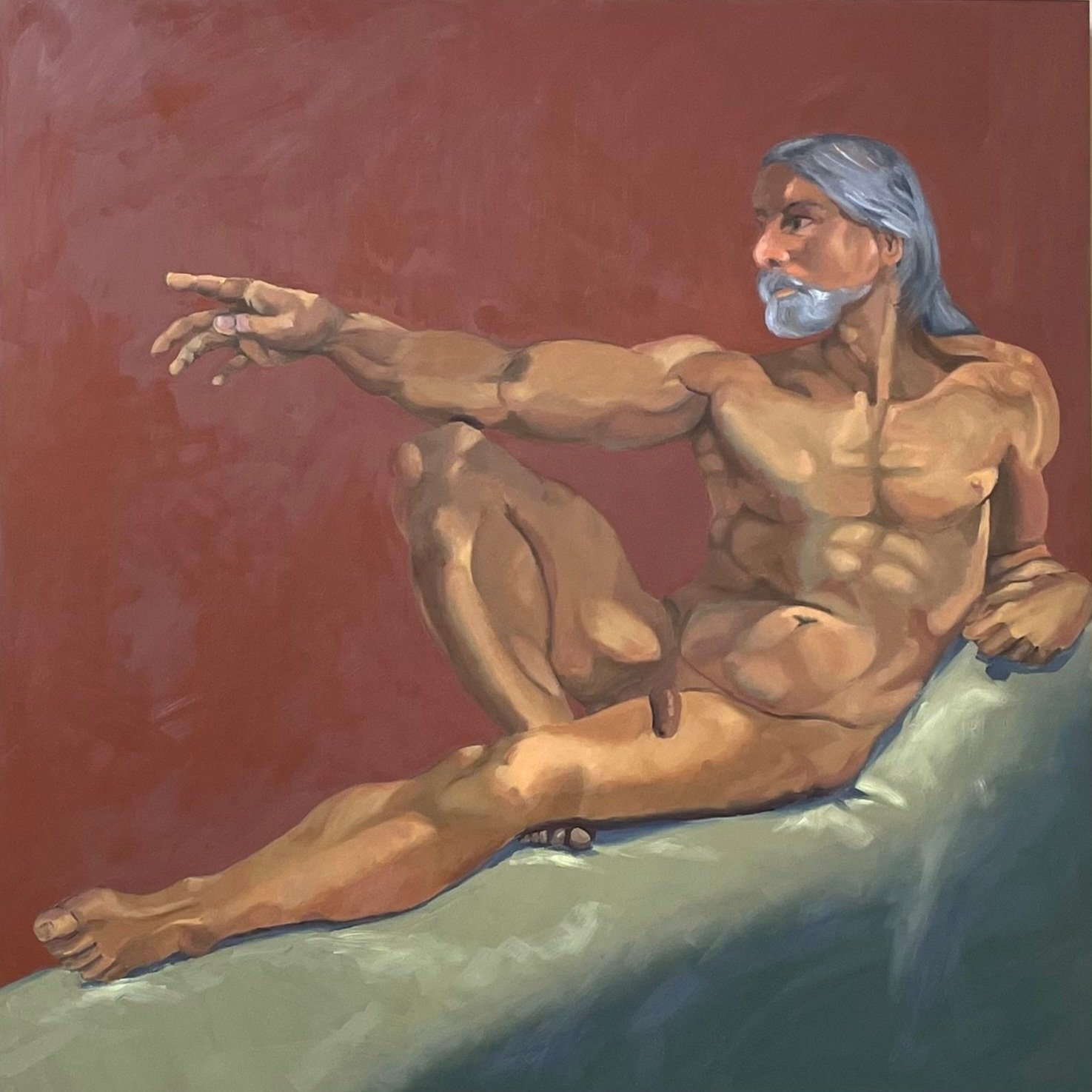
Deconstructing the Creation of Eve
Artist Statement
As a woman living in a patriarchal society, I am especially interested in issues of authoritarianism, hierarchies, outmoded value systems, and how to effectively change what no longer serves. I seek to find a way to revisit the female figure in oil painting, while aware of my own biases having grown up and existing in this same culture.
For example, in the diptych “Deconstructing the Creation of Eve” I represent this struggle within myself and in the world as a confrontation with the “life-giving” white god-man (a combination of Michelangelo’s depiction of God and Adam) interacting with an eyes-wide-open woman of full agency. I chose this particular model for her quiet dignity and personal integrity that I admired in her. She required no one’s permission to pose, in full possession of her own authority. In using the iconic image by the Renaissance master painter, I give a nod to the historical representation of the fine art of the human figure. I have chosen as a model for this god-man a living man of Jewish descent, representing the Old Testament Yahweh, “who brings into existence whatever exists.” The fact that God is represented by Michelangelo (and others) as a white man speaks to the elevation of white men through religion that continues to this day in our current Mad Men-esque culture, now dominated by corporate, institutional, and systemic misogyny. Should the white god-man dictate how women are seen and represented?
I am asking my viewers to ponder this conflict. Can women be represented with the full beauty of their bodies in plain sight independently of the patriarchal limitations imposed throughout history? Must women hide their bodies as the only expression of agency in response to our misogynistic culture? Is the denial of feminine beauty another form of sexual repression? Another form of control of unwieldy feminine emotions and passion?
Inspiration
My idea began as a wish to paint a model who had once served as a muse. When confronted with current cultural disdain for representing the nude human form as an object of beauty, I turned to Renaissance Master Michelangelo for help.
Artistic Process
Emboldened by the historical representation of the human figure in fine art glorified by Michelangelo (among many others), I cropped my source photo to fit the square panel I had chosen to use for the painting.
Employing a grid technique for more accurate drawing and placement, I transferred the source image to the painting surface, a 36”x 36” cradled panel.
When I was nearly finished painting Eve, I moved on to paint the god-man to better coordinate the two paintings as a diptych.
First, I reversed the image of Adam so that he faced the image of “Eve.” This made a change to Michelangelo’s iconic image “The Creation of Adam” such that Adam now held the position of God. Going with this metaphor, I used an older male model’s head and hand replacing Adam’s to create the new image of the white god-man.
Again, I used a grid to more accurately transfer the source image to the 36” x 36” panel.This new creation of the white god-man pointing at the partially clad modern woman conveyed the idea of old archetypes dictating/prohibiting/ approving modern cultural norms.
When nearly finished with this painting, I placed the two panels side by side to better see and imagine the two together as one painting. To complete the diptych, I emphasized similarities of color and texture in foreground and background to enhance the compositional similarities including the diagonal placement of the two facing figures.
Deconstructing the Creation of Eve
So much for “Adam’s Rib,” a myth that removed women from creation altogether! Instead of an equal, contributing partner, Eve was represented as Adam’s inferior “sidekick” who was further condemned for causing his eventual downfall and their exile from God’s paradise.
Oil on panels | 36” x 36” (each panel) | $6000
